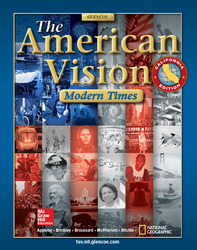1 A) Virginia City B) Comstock C) Black Hills D) Leadville 2 A) because the railroad purchased the cattle to feed workers building the transcontinental railroad B) because the railroad brought supplies to the cowhands working the open range C) because the railroad transported the beef to eastern markets D) because the railroad brought settlers out West, creating a larger western market for beef 3 A) It financed the construction of the transcontinental railroad. B) It provided low-cost loans to prospective settlers. C) It sold settlers inexpensive tracts of land along the railways. D) It provided a legal method for settlers to acquire property rights. 4 A) Native Americans B) the United States Army C) federal agents from the Bureau of Indian Affairs D) a council of Native American leaders 5 A) Many Native Americans had little training or enthusiasm to become farmers or ranchers. B) Native Americans were unwilling to leave the reservations. C) Although Congress passed the Dawes Act, it was never implemented on the local level. D) The Dawes Act failed to establish a system by which the reservation lands would be divided. 6 A) It provided railroad investors the income to build more factories. B) It allowed cars to be shifted from one section of the country to another based on seasonal needs. C) It limited the number of railroad companies, making the transportation of goods more expensive. D) It encouraged people to move to cities, increasing factories’ available workforce. 7 A) control a group of companies as if they were one large merged company B) combine competing companies within an industry C) join all the processes of an industry under one company D) merge several companies that did not compete in the same market 8 A) Both groups were fleeing rebellions in their homelands. B) The majority of both groups disembarked at Ellis Island. C) Both groups mainly settled in the nations’ cities. D) Both groups were trying to escape religious persecution. 9 A) When rising nativism inspired new laws that restricted immigration, Chinese immigrants successfully petitioned to have the laws repealed. B) Despite rising nativism, the relative ease with which immigrants entered the country remained unchanged. C) Rising prejudice against immigrants stimulated new laws that restricted immigration and withheld citizenship from Chinese immigrants. D) The emergence of anti-immigrant groups motivated Congress to pass laws that made it a federal crime to interfere with immigrants’ rights. 10 A) it proposed that one has complete control over one’s future B) it gave industrialists the responsibility of raising the social consciousness C) they thought that the development of huge corporations proved the idea that only the fittest survive D) they wanted to promote a realistic view of their corporations’ role in society 11 A) he believed that the only way to reform society was to reform people’s character B) he believed that the only way to reform society was to provide people with services C) he believed that society could not be improved D) he believed that society’s only hope was to develop public educational services 12 A) Booker T. Washington B) Jane Addams C) Andrew Carnegie D) John D. Rockefeller 13 A) Great Plains farmers B) Catholics C) the South D) immigrants 14 A) Interest rates rose, increasing the amount farmers owed. B) The prices of goods rose, making it more expensive for farmers to replace machinery. C) Deflation made it difficult for farmers to sell their crops in the marketplace. D) As paper money lost its value, farmers lost their savings. 15 Plessy v. Ferguson ?A) African Americans lost their right to vote. B) African Americans were denied equal protection under the law. C) Legalized segregation was imposed upon African Americans. D) African Americans were barred from public office.







